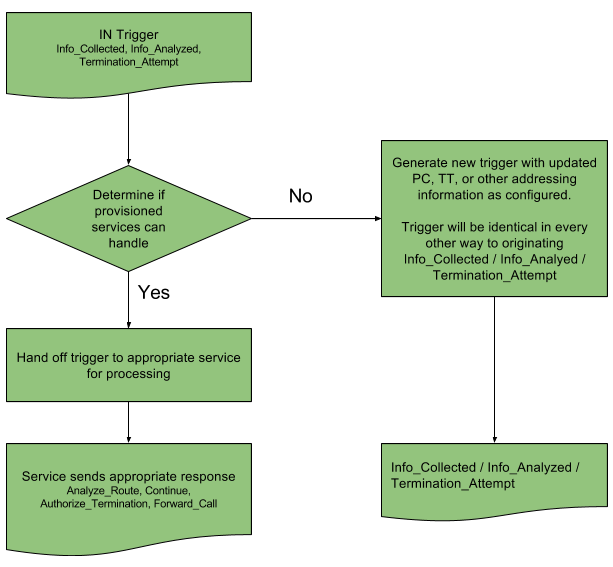TCAP Forwarding Service¶
Migrating a single service onto a new platform can be a daunting task. Migrating several is even more intimidating. Therefore having the ability to break apart a multi-service migration into individual migrations for each service is a valuable functionality. This ability is often met by several technological barriers in the SS7 world. However, TCAP Forwarding offers a unique solution for any of your IN services provisioned on a Service Control Point (SCP).
How TCAP Forwarding Works¶
The TCAP Forwarding application will receive a trigger and then generate an identical trigger to send to the Signal Transfer Point (STP), it will change the Called Party Address in the Signaling Connection Control Part (SCCP) Layer of the incoming trigger based on the configuration file.
The configuration file determines which fields in the Called Party Address to change. Therefore, the resulting Called Party Address of the new ‘forwarded’ trigger will be whatever is in the original Called Party Address overridden by whatever is in the configuration file.
For more information about the configuration file, see Configuration.

Signaling¶
The rest of this chapter details the specific call flow of various call treatments.
Note
Wireshark traces of a call flow can be viewed by clicking the link provided below the diagram.
AIN Queries and Responses¶
AIN Termination_Attempt
The following diagram shows the message exchange when Termination_Attempt is received in a no-route case.

AIN Info_Collected
The following diagram shows the message exchange when an Info_Collected trigger is received and routed with GETS.

AIN Info_Analyzed
The following diagram shows the message exchange when an Info_Analyzed trigger is received and routed with GETS.
